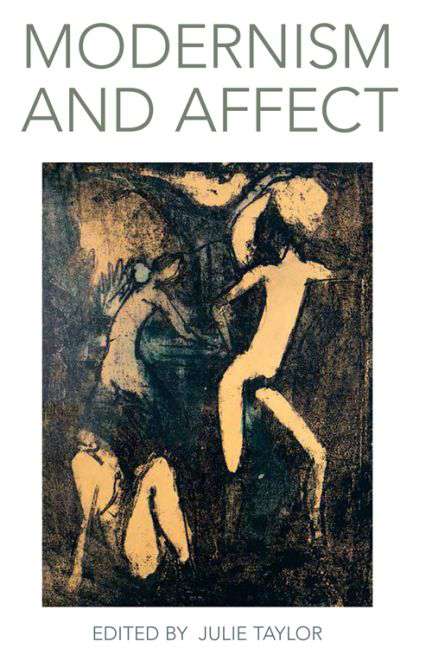Book contents
- Frontmatter
- Contents
- List of Illustrations
- Acknowledgements
- Notes on Contributors
- Introduction: Modernism and Affect
- 1 Mind, Body and Embarrassment in Henry James's The Awkward Age
- 2 The Trauma of Form: Death Drive as Affect in À la recherche du temps perdu
- 3 Logic of the Heart: Affective Ethical Valuing in T. E. Hulme and Max Scheler
- 4 The Line that Binds: Climbing Narratives, Ropework and Epistolary Practice
- 5 The Amplification of Affect: Tension, Intensity and Form in Modern Dance
- 6 Love and the Art Object
- 7 Animating Cane: Race, Affect, History and Jean Toomer
- 8 Fear and Precarious Life after Political Representation in Baudelaire
- 9 Bloom-Space of Theory: The Pleasure and the Bliss of Gerty MacDowell
- 10 From Odysseus to Rotpeter: Adorno and Kafka, Mimicry and Happiness
- 11 Making Happy, Happy-making: The Eameses and Communication by Design
- Index
3 - Logic of the Heart: Affective Ethical Valuing in T. E. Hulme and Max Scheler
Published online by Cambridge University Press: 15 September 2017
- Frontmatter
- Contents
- List of Illustrations
- Acknowledgements
- Notes on Contributors
- Introduction: Modernism and Affect
- 1 Mind, Body and Embarrassment in Henry James's The Awkward Age
- 2 The Trauma of Form: Death Drive as Affect in À la recherche du temps perdu
- 3 Logic of the Heart: Affective Ethical Valuing in T. E. Hulme and Max Scheler
- 4 The Line that Binds: Climbing Narratives, Ropework and Epistolary Practice
- 5 The Amplification of Affect: Tension, Intensity and Form in Modern Dance
- 6 Love and the Art Object
- 7 Animating Cane: Race, Affect, History and Jean Toomer
- 8 Fear and Precarious Life after Political Representation in Baudelaire
- 9 Bloom-Space of Theory: The Pleasure and the Bliss of Gerty MacDowell
- 10 From Odysseus to Rotpeter: Adorno and Kafka, Mimicry and Happiness
- 11 Making Happy, Happy-making: The Eameses and Communication by Design
- Index
Summary
On 10 August 1914, less than a week after Britain declared war on Germany, T. E. Hulme volunteered for the army. Still in his late twenties, Hulme had been active in London's intellectual circles for some time. His earliest known writings, the rudimentary notes published posthumously as ‘Cinders’ and ‘Notes on Language and Style’, date from 1906–7. In about 1908, he delivered ‘A Lecture on Modern Poetry’, in which he outlined some of the key poetic principles that went into forming Ezra Pound's Imagist and Vorticist aesthetic: formal and metric irregularity; presentation of personal or subjective impressions; and juxtaposition of images in poetry into distinct lines (Hulme 1994: 53–5; cf. Pound 2005: 253, 244, 283–6). Hulme recast these poetic tenets into a theory of ‘classical’ modernism in ‘Romanticism and Classicism’ in 1911–12, now giving them a distinctly political bearing: the new poetry must be ‘accurate, precise, and definite’, in accordance to the anti-progressive, anti-sentimental and, ultimately, anti-Liberal ‘dry classical spirit’ that recognises human nature as fixed and finite, and which therefore requires external checks and control (1994: 68, 66, 70). As well as being a progenitor of this ‘classicist’ brand of anglophone literary modernism, Hulme was one of the earliest propagators of the influential metaphysics of Henri Bergson. He spent 1909–11 discussing Bergson's ‘new philosophy’; during this period, he also published a series of articles for the right-wing weekly The Commentator. In his political writings, Hulme refutes the Liberal ‘myth’ of Progress, and, describing himself as ‘a certain kind of Tory’, advocates politics based on ‘order’, ‘discipline’, and ‘tradition’ (ibid.: 232, 235). Hulme wrote extensively on modern abstract art, too, defending, from his position as prominent contributor to The New Age, the geometric art of Epstein and Epstein's circle. When the war broke out, Hulme emerged as a vocal supporter of Britain's decision to intervene.
- Type
- Chapter
- Information
- Modernism and Affect , pp. 56 - 74Publisher: Edinburgh University PressPrint publication year: 2015

